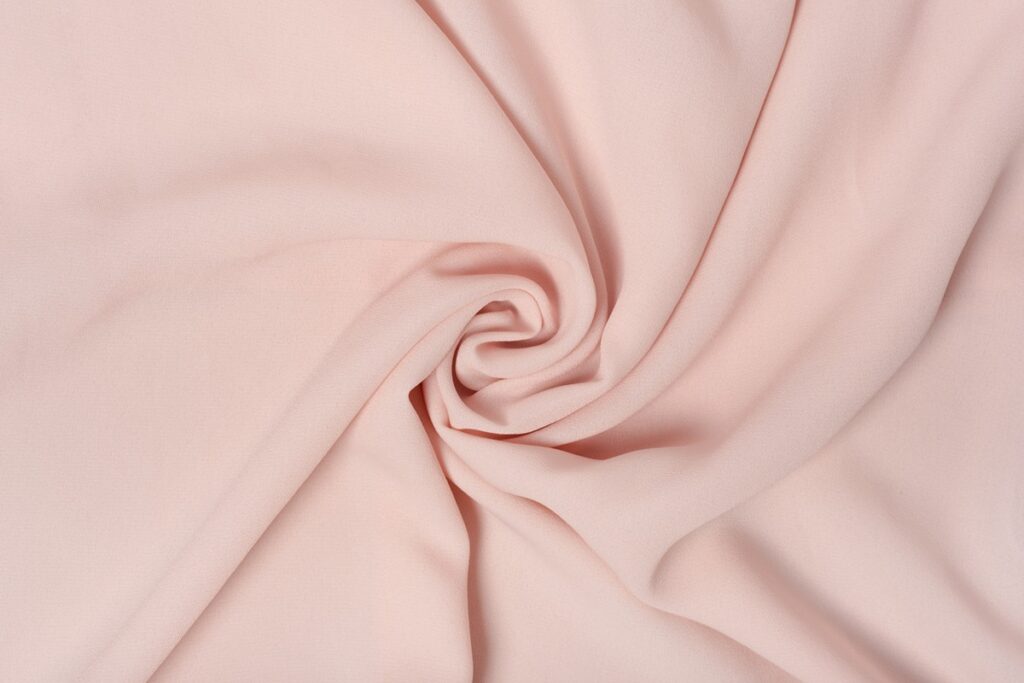Polyester might be the fabric most of your clothes are made of, regardless of that, we will show you what’s the best for your polyester favorite sweatshirt so it doesn’t get ruined. While reading this you’ll get to know why polyester wrinkles, how can you remove the wrinkles, and how to maintain them. Polyester has many techniques for its maintenance.
Key Takeaways
- Polyester is another name for polyethylene terephthalate.
- In contrast to fabrics composed of cotton, silk, or wood fibers like viscose, polyester is man-made.
- In the 1970s, polyester first became widely used. It was popularized by two British scientists named John Rex Whinfield and James Tennant Dickson using a very creative marketing technique.
- We can safely assume that polyester is not one of those extremely wrinkled materials.
What is Polyester?

Polyethylene terephthalate is also known as polyester. This fabric arrives from a mix of petroleum, water, and simply air. The important quote is that polyester is man-made unlike cotton, silk, or wood fiber materials such as viscose. Due to their chemical reaction, we get the famous polyester material. This is an artificial material structured of PTA (purified terephthalate acid) and MEG ( Monotheluene glycol). Polyester fabric is also thermoplastic which means it can be reformed or even melted. Polyester is a type of melted fabric, but don’t worry that’s not as bad as it sounds, or is it? Stay tuned to know more
How did polyester reach its fame in the textile industry?
Polyester reached its popularity back in the 1970s. Two British chemists named John Rex Whinfield and James Tennant Dickson made it popular with a very interesting marketing strategy. Their advertisement of this fabric is what made it reach all textile industries in a short period. They advertised it as the “miracle fiber” that could be worn for 68 days without the need to iron it, yet still, it looked as fine as the first time wearing it. But like every fast fame polyester reached its downfall fast after the 70s and from then on it was known as a cheap and plastic material that is uncomfortable. But besides that, it is still used to this day.
Is polyester a wrinkly material?
Unlike other very wrinkly materials, we can safely say that polyester is not one of them. Yes, polyester wrinkles but in very rare and specific situations. Polyester combined with other materials is neutral to wrinkles. What we imply by this is that a mix of polyester can wrinkle a little but you can get the wrinkles out very easily. On the other note, 100% polyester is wrinkle-resistant. This material doesn’t wrinkle as much as other materials thanks to its synthetic fibers. With that said, a mix of polyester can wrinkle in some circumstances but it is not a big deal since the wrinkles can be easily smoothened. Stay tuned to know how.
How can I get wrinkles out of polyester?
The methods of getting wrinkles out of polyester are quite easy. The easiest one is shaking your polyester cloth before wearing it, and if the wrinkles are small they will be immediately smoothened and you will be ready to go! In case this doesn’t work you can try a steamer (hand-held steamer) because it is the safest and easiest way to get rid of wrinkles and works wonders. If you don’t have a hand steamer then iron is a great alternative but you have to use the steam setting on your iron so it works better. Drier is not the best option but it surely works, you just have to be careful and set it on low heat because polyester can easily melt at high temperatures.
How can I maintain polyester?
If you don’t expose your polyester clothes to very high temperatures or if you don’t leave them creased when you take them off, the material won’t even be wrinkled. Before putting polyester in the washing machine you should turn the cloth inside out so it has better resistance. Don’t wash it in temperatures above forty degrees if you don’t want to be your iron’s slave. After taking it out of the washing machine turn it on its regular side and hang it to dry in a straight position. If you are careful with this process you won’t even have the need to steam or iron them, your polyester clothes will be as fresh as you are wearing them for the first time! You also must check the label inside the cloth because it always has tips and tricks on how to maintain that particular cloth fresh.
What are the prepositions to polyester?
Although people often make polyester seem like a bad material there is a reason why it got so popular and still is to this day. Polyester reached its fame in the industries thanks to its wrinkle and abrasion resistance. This material is also strong but lightweight at the same time which makes it practical. It is also easy to clean, easy to dry and you can easily use your decorative ideas to print on it or even draw directly on it since it will absorb the dye. But on the other hand, polyester doesn’t last long in outerwear and on long-term notice. Also, it is more expensive than other fabrics due to its production process.
Wrinkle Releasing: Does it work?
Actually no. Due to its inability to hold moisture wrinkle releasing products don’t work on it. That is because synthetic (plastic) microfibers can not absorb moisture unlike natural materials like cotton that can. Keep in mind that this was for a hundred percent polyester only. Blended polyester with other materials can have a nice reaction to wrinkle release. For example, if you use wrinkle-releasing products on poly cotton (60% cotton, 40% polyester) you will get a good result since cotton absorbs moisture and liquids very well because it is a natural material.

Final Words
Polyester is easily one of the most used fabrics in this day and age besides its synthetic fibers and chemicals. The reason for that is its practical usage that doesn’t take much to maintain. Polyester is used in the clothing industry, curtains, tapestry, and many more industries. Due to its lightweight, the transportation of polyester is easy and not so expensive. Polyester has long durability without showing signs of tearing the material. Even though it is more expensive, polyester is totally worth it because of its quality and lifespan.
Further Reading
There is some further reading you can do. For example, there is an excellent list of serger threads that you can buy, or if you need chalk, I have a list of some fantastic chalks for tailors.
There is also a list of fantastic sewing lamps.
And other blogs include if you can iron wool or such as if you can iron a tie.
I am a proud mother of two amazing daughters, and i run our sewing & embroidery business full time. I am also a part-time writer for this blog, because i love sharing my findings and experiences!



